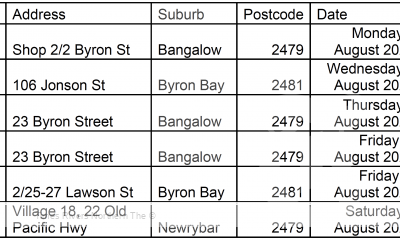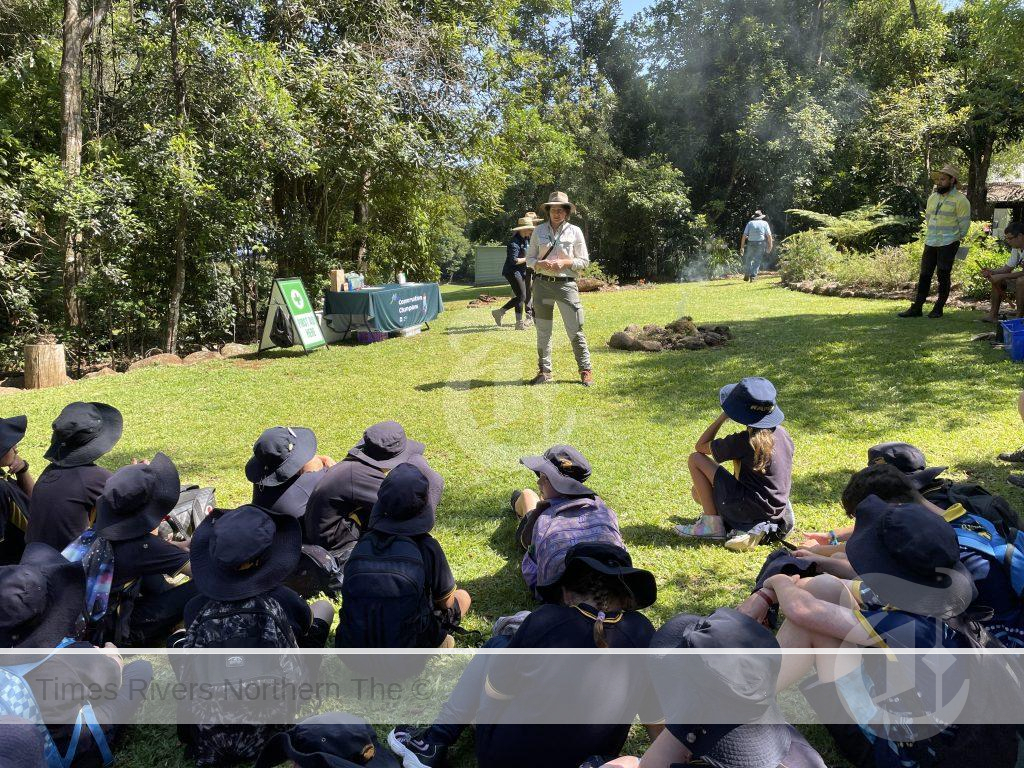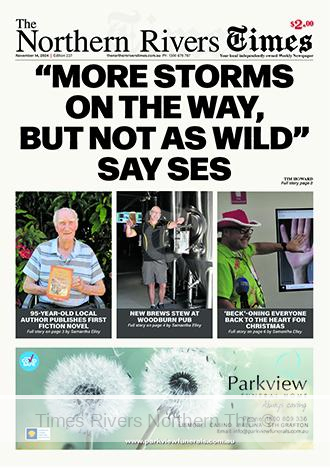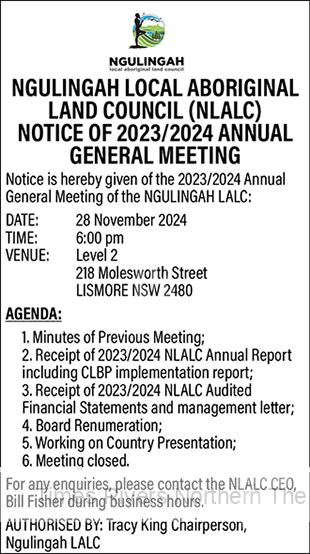Squatters and traffic highlighted in council meeting
By Samantha Elley
Lismore City Council settled in to its second ordinary Lismore council meeting since the local government elections in September and new councillors were finding their feet.
Some of the main topics up for discussion included the Nimbin Place Plan, the request for land by the Richmond River Gun club and a question on notice about squatters living in flood-affected homes in Pine Street, North Lismore.
Diana Roberts from the Nimbin Chamber of Commerce spoke in the public forum asking council to highlight a few specific issues before approving the Nimbin Place Plan.
These included a comprehensive traffic management plan.
Ms Roberts said while the current plan talks of active transport, it doesn’t deal with specific vehicle movements.
“The chamber does support the recommendations and the priorities identified in the plan,” she said.
“There is one major issue not addressed in the plan and that’s traffic management.
“There are incredible concerns that we’ve raised with the general manager walking around the village with councillors who have been there.”
There was also an issue with the Rainbow Walk being renamed and the public toilets, both owned by council. The toilets are in need of refurbishment and a request was made for water hoses to be added for the street plants.
Cr Guise moved to add the extra requests and Cr Robb asked for a Plan of Management for 9 Sibley Street and surrounding areas, including Peace Park.
These would be considered as funding becomes available.
It was voted unanimously.
The other popular topic raised in the public forum was the Question of Notice regarding people who are squatting in the Pine Street houses that have been bought back by the NSW Reconstruction Authority.
The question was raised around any agreement between Council and the NSW Reconstruction Authority to allow the squatters to take up residence and what are the enforcement powers by Council over the squatters, along with who is paying for the rubbish that is collected from them.
Miriam Torzillo, a North Lismore resident spoke on the concern over the hundreds of empty houses and their fate and the housing crisis affecting Lismore.
“I would argue people are living in those houses are caring for those houses and furthermore they are not being added to the extremely long waiting list for social housing,” she said.
“I want to propose as a North Lismore resident that the situation in Pine Street does not need an intervention by Council.
“Empty boarded up houses on the one hand and the housing crisis on the other, that is why I refer to those living in the houses as caretakers.”
Emma Dorge is also a resident of Lismore and connected with the Pine Street squatters.
She spoke of the cost of having to house the homeless would be more than any cost on what rubbish collection may be.
Cr Robb asked why people, mainly travellers, would be allowed to jump the queue and break into houses with no permission and not use those houses for people at the top of the list.
“I think it is a pertinent question as to why hundreds of houses have been left empty in a housing crisis,” said Ms Dorge.
“But that is one for the government and not one I can answer, the RA created this situation for people that are renting having to move out even if they had nowhere else to go.
“The reality is people aren’t jumping the queue because (the houses) aren’t being offered to anyone else, they are taking it to put a roof over their head.”
Council staff advised they have liaised with the NSW Reconstruction Authority who are working in partnership with NSW Police, Sheriff’s office and Homes NSW regarding the occupations.
And while Council has not entered into any agreement with the Authority or have jurisdiction to evict trespassers, it has from time to time collected rubbish from the properties in question to reduce the risk of illegal dumping.
For more local news, click here.





 Tweed Shire News2 years ago
Tweed Shire News2 years ago
 Motoring News2 years ago
Motoring News2 years ago
 COVID-19 Northern Rivers News3 years ago
COVID-19 Northern Rivers News3 years ago
 COVID-19 Northern Rivers News3 years ago
COVID-19 Northern Rivers News3 years ago
 Northern Rivers Local News3 years ago
Northern Rivers Local News3 years ago
 Health News3 years ago
Health News3 years ago
 COVID-19 Northern Rivers News3 years ago
COVID-19 Northern Rivers News3 years ago
 NSW Breaking News3 years ago
NSW Breaking News3 years ago






























